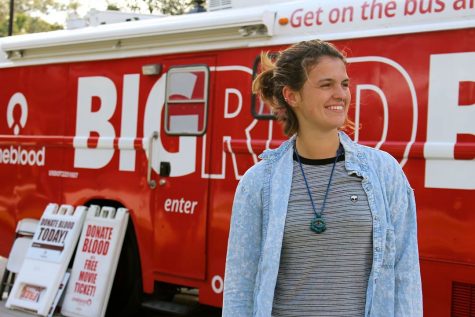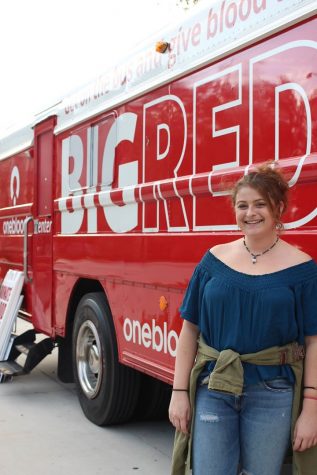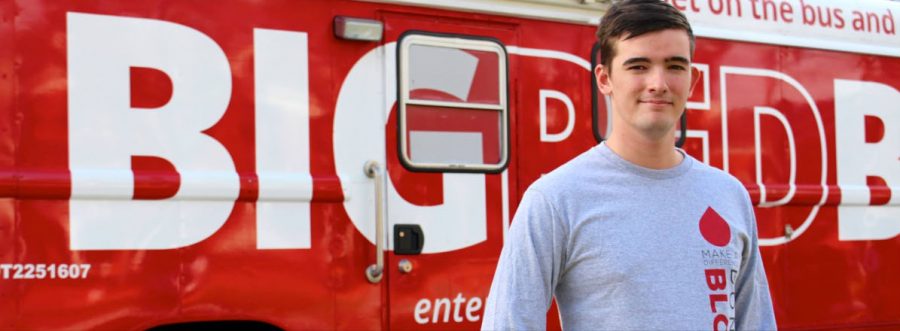OneBlood is One Way to Save Lives
February 21, 2017
Every two seconds someone is in need of a blood transfusion to stay alive. Trauma, surgery, and chemotherapy patients are in need of your blood. And the process is as easy as eating a slice of pizza.
OneBlood, a non-profit organization, partners with over 200 hospitals to provide transfusion for ill patients. Perhaps their most well-known symbol is the OneBlood Big Red Buses, which can be seen parked both on college campuses and in communities at large. On Jan. 25 and 26, these classic Big Red Buses parked in the center of Stetson’s campus, silently calling for volunteers.
Andrew Schuler noticed the big red bus, and he says that it was a good thing he did. This year was Schuler’s first time donating blood, and he wasn’t too worried about it. Schuler explained that in the past, sports restricted him from donating because of the potential health concerns he could experience later on in the day, such as lightheadedness and fatigue.
But he made donating blood a priority this year. After researching about donating, he learned ways to stay healthy and avoid fatigue after donation. Some such techniques include eating properly and hydrating, which help to maintain proper blood sugar levels, the day of your donation. Schuler reported that his family “donates as much as they can, especially Dad. He was a huge inspiration for me to donate.”
Olivia Valiante experienced her first time donating as well, but approached the OneBlood bus with more apprehension. Valiante expressed her fear of the bus and “what awaited inside.” Nervous around needles, she had previously shied away from the Big Red Bus. However, this year her friend volunteered for OneBlood, which “helped relieve some of my worries. He said that I have the potential to save the lives of three people, and it only takes a few minutes. Plus there’s free pizza, cookies, juice and a t-shirt.”

Valiante’s increased awareness for the OneBlood cause challenged her previously fearful perception, for the better. She concluded, “Giving blood really does make a difference and it can save lives. I realized that I honestly don’t have any valid excuses, so why not?”
An avid blood donor, Chelsea Cameron has donated five times in the last two years. Despite this past experience, Cameron found herself feeling slightly anxious. She explained, “I’m usually not nervous, but last time I donated I had a bad experience.” Cameron had forgotten to eat prior to donating blood, resulting in minor complications. But fortunately, she is dedicated and continues to give blood. Cameron was first educated about blood donations in her high school biomedical science program. She was thrilled to discover that she is the universal red cell donor–Type O negative–and she now donates whenever she can.

Only 38% of the population is qualified to donate their blood. Of that percentage, less than 10% ever donate. If every donor gave blood one more time a year, the medical field would see a definite end to blood shortages. OneBlood stands as a way to help remedy this problem. This organization has been and continues to be a sanitary and accessible way to help make a lasting difference in people’s lives.
Missed the Big Red Bus on campus? No worries! DeLand Donor Center is located at 1730 S Woodland Blvd, which is just a 10 minute drive from campus. A common reason why students are reluctant to donate is a result from misinformation or lack thereof. For more information, visit www.oneblood.org or call 1-888-9-DONATE.








